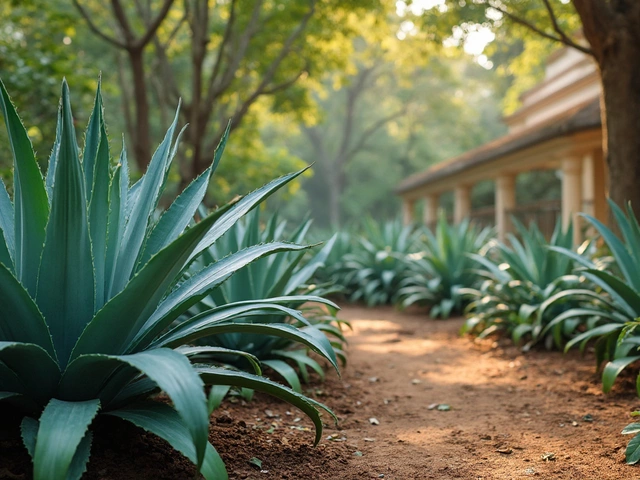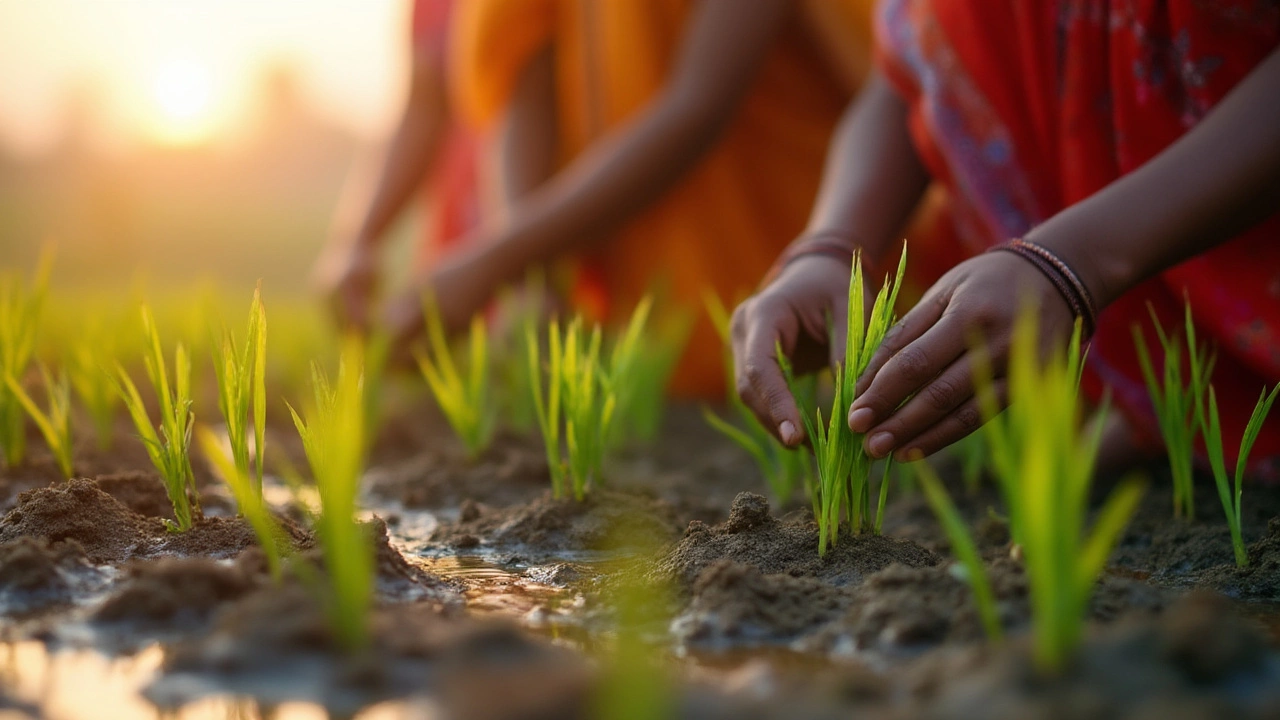Rice Planting Depth: How Deep Should You Plant Rice?
If you’re starting a rice field, the first question is often "how deep should I plant the seed?" The answer changes with the method you use—direct sowing or transplanting—and with your local soil and water conditions. Planting at the right depth helps seedlings break through the soil, reduces seed loss, and sets the stage for a strong harvest.
Direct Sowing: Shallow is Best
When you scatter seeds straight onto a prepared field, aim for a depth of 1–2 cm (about half an inch). Anything deeper blocks the tiny seed’s ability to push up, especially if the water level is low. First, level the soil, add a thin layer of fine compost, and then broadcast the seed. Lightly press the soil with a roller or a flat board to keep the seed in place, then flood the field to a 2–3 cm water depth. This shallow layer lets the seed soak quickly and sprout within a week.
Transplanting: A Slightly Deeper Pocket
If you grow seedlings in a nursery and move them to the field, plant each transplant 3–5 cm deep (1–2 inches). The extra depth protects the young roots and helps the plant stay upright in flowing water. Dig rows with a spade or a simple dibbler, place the seedling gently, and cover the base with soil. After planting, keep the water level at 5–7 cm for a few days so the seedlings can adjust before raising the water to the normal 10 cm depth.
Why does depth matter? Too shallow and the seed can wash away or be eaten by birds. Too deep and the seedling exhausts its energy before reaching the surface, leading to weak plants or failure to emerge. Both scenarios lower your yield, so getting the depth right saves time, money, and effort.
Soil texture also influences depth. In heavy clay, a shallower planting helps because water moves slowly and the seed can stay moist longer. In sandy loam, a slightly deeper slot prevents the seed from drying out too fast. Before planting, test a small area: dig a hole, fill it with water, and see how quickly it drains. Adjust the depth accordingly.
Water management goes hand‑in‑hand with depth. For direct sowing, maintain a constant 2–3 cm water level for the first 10–14 days. For transplanted seedlings, keep water at 5–7 cm for the first week, then raise it to the normal flood depth of 10 cm. Consistent water prevents the soil surface from cracking, which can expose shallow seeds to the air and kill them.
Regional tips for India: In the Khadi region of West Bengal, farmers often plant at 1.5 cm for direct sowing because the monsoon provides ample water. In Punjab’s irrigated fields, a 3 cm depth works well for transplanted varieties that need a sturdier start in drier soil. Adjust based on your local climate and the rice variety you grow.
Finally, keep an eye on the field after planting. If you notice many seedlings stunted or missing, re‑check the depth and water level. Small tweaks early on can make a big difference by the time you harvest.
Getting the rice planting depth right is a simple step that pays off in healthier plants and better yields. Use these guidelines, watch your field, and enjoy a bountiful crop.
How Deep to Plant Rice: Best Depths, Mistakes, and Expert Tips
Planting rice at the right depth might sound simple, but it's key for healthy crops. Find out the science behind the best rice planting depth and get hands-on advice for perfect results.
About
Rice Cultivation
Latest Posts


India's National Fruit: The Mango Explained
By Alden Thorne May 15, 2025

Discover the Marvel of the Agave, the Plant That Blooms Once Every 7 Years
By Alden Thorne Mar 8, 2025

Most Sustainable Plant in the World: A Real Game-Changer for Your Garden
By Alden Thorne Apr 23, 2025

